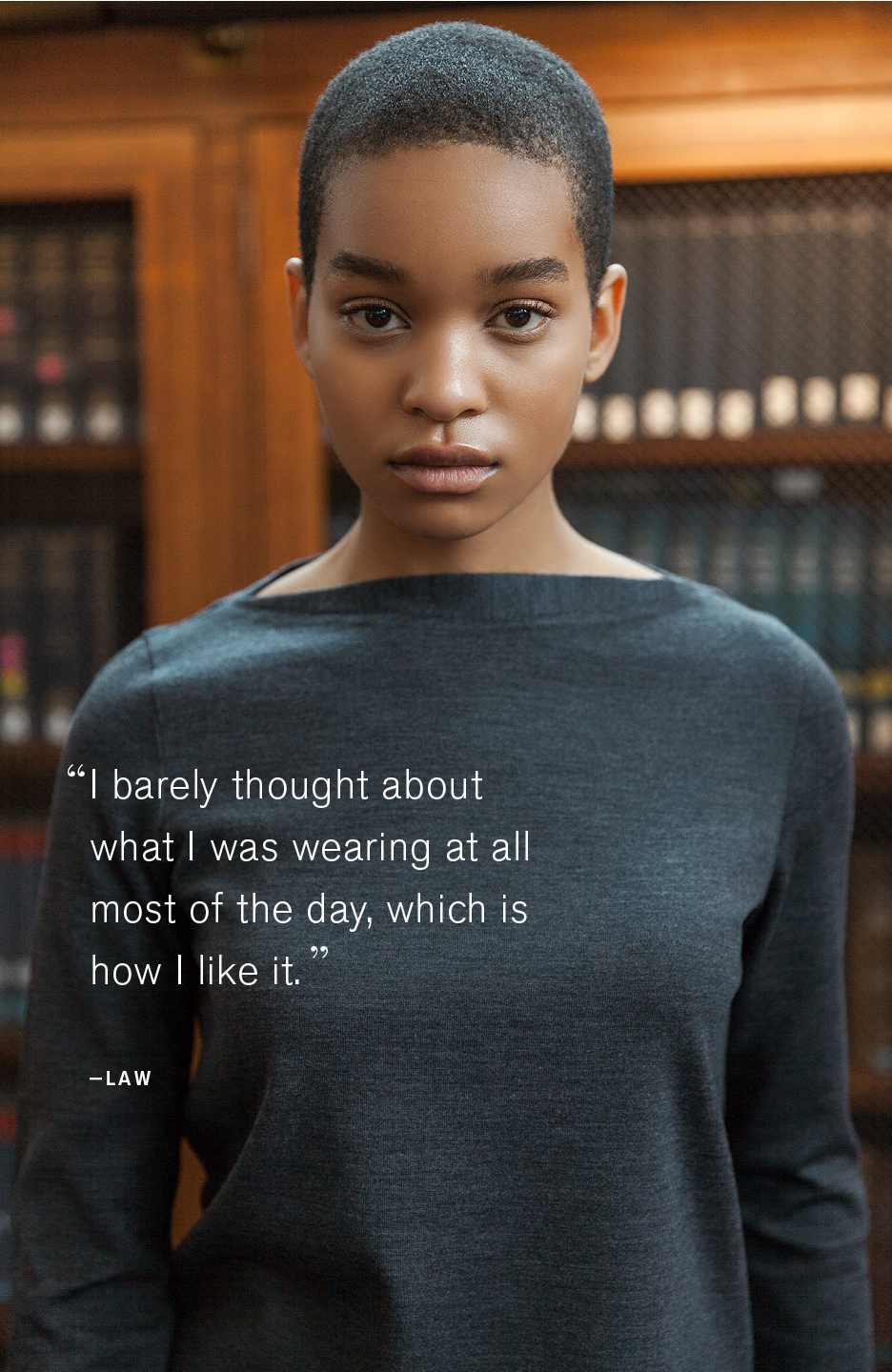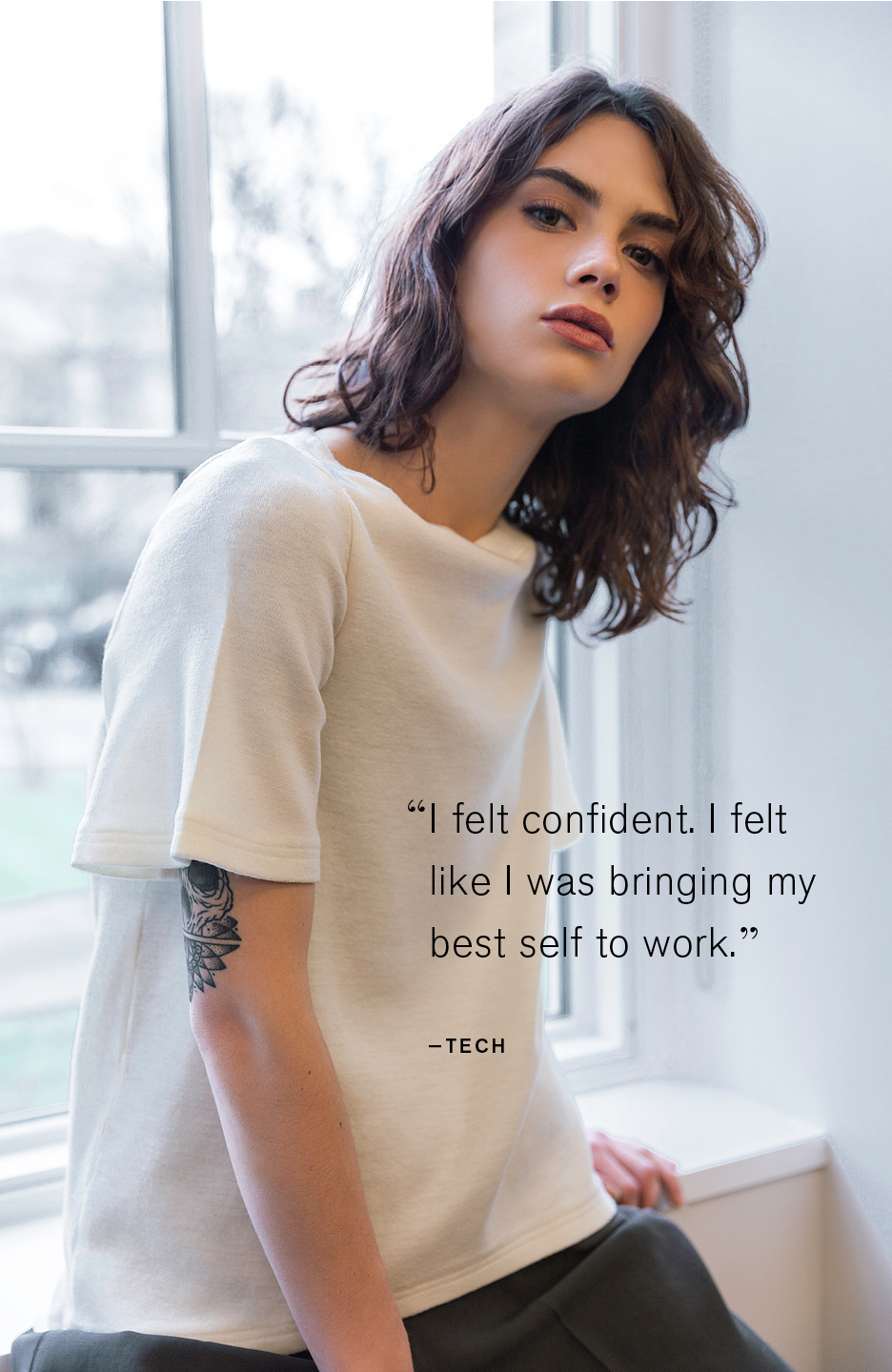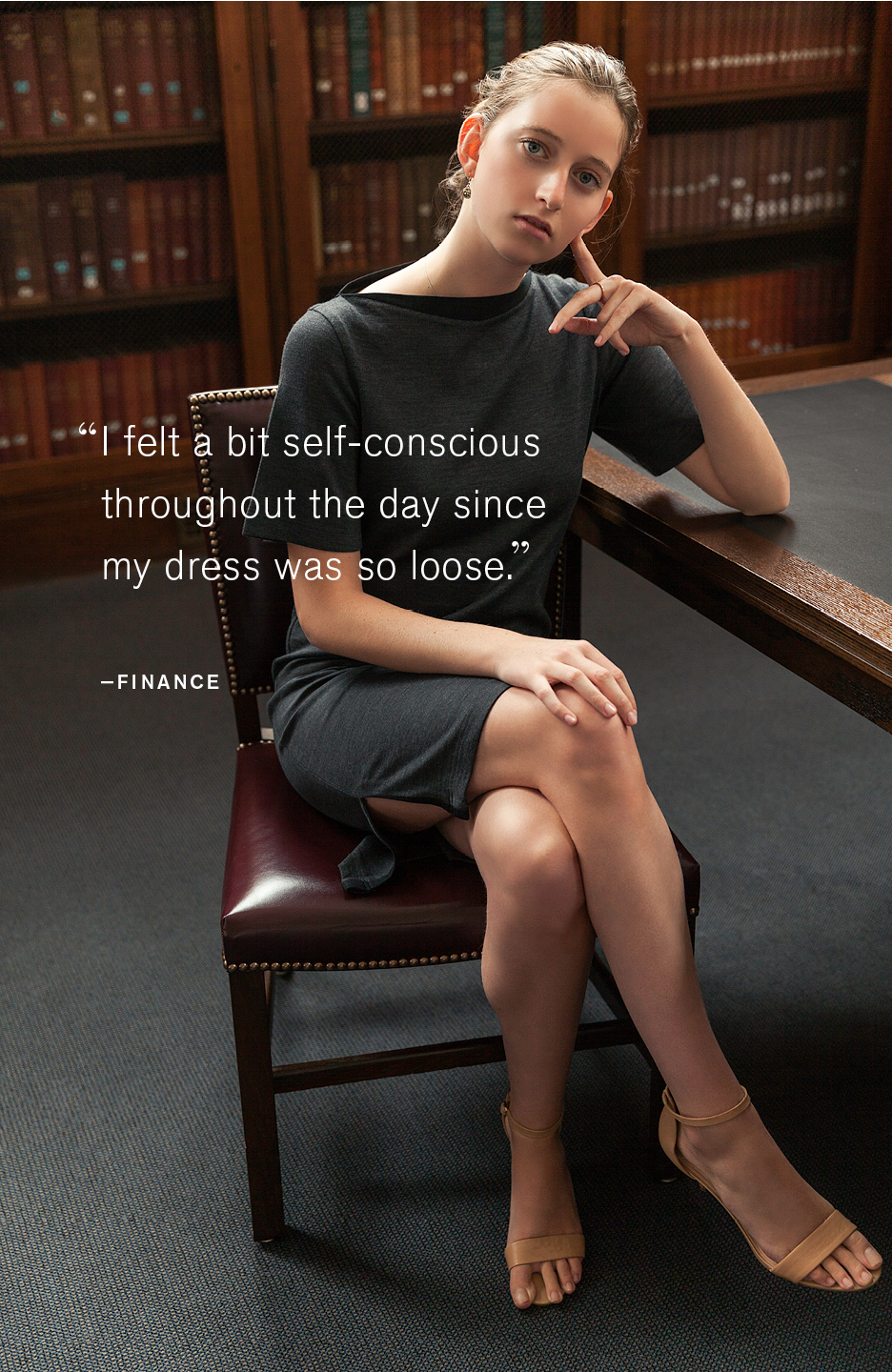
Idiosyncratic Uniform
Fashion as a human-centered design problem.

Idiosyncratic Uniform
Clothing acts as a mediator between the individual and the social. It creates a dialogue between our inner selves and our environments, a dialogue that becomes especially fraught for women in work environments. Idiosyncratic Uniform treats fashion as a human-centered design problem. This body of work was my graduate thesis at RISD.
Getting dressed for work is a big challenge for professional women, especially those with positions in male-dominated fields.
Can the implementation of industrial design thinking into fashion address complex issues like gender biases at work?
Abstract
Focusing on women’s workwear in male-dominated fields, Idiosyncratic Uniform calls attention to the existing cultural norms in work environments that solidify dated gender expectations and biases. It suggests that the fashion industry has not adequately addressed the sartorial and emotional needs of everyday working women, and intervenes by placing wearers at the center of the design process. By applying user research and needs-driven solutions to a psychologically powerful force like fashion, this thesis explores the merging of fashion with industrial design. At the heart of the project lies the question, can the implementation of industrial design thinking into fashion address complex issues like gender biases in work environments?
Scoping the problem

Distinct division in the sartorial approaches of male and female employees.
For working women, getting dressed is a much more complicated and nuanced process than it is for their male counterparts.
Balancing professionalism, femininity, and modesty in the workplace becomes a confusing morning routine driven by the question, “Will I be taken seriously in this outfit?”
Dress etiquette in professional settings is indicative of the culture of the work environment.

Professional women don’t know what to wear.
There is no female equivalent to the suit itself. There is no neutral garment that, when wrapped around the female body, immediately transforms from a lifeless drape into a socially accepted symbol of competence and professionalism in the way that a man’s suit does.
The aesthetic of “professional” is unclear. The perceptions of a feminine versus an androgynous sense of style impose different sets of challenges and questions for the wearer.

Urban uniforms are everywhere, but are taboo for women.
Contrary to the standards of dress for men, there is a taboo in the working world around women wearing the same thing everyday.
Although women are not always expected to be trendy, they are expected to be more expressive through their attire, leaving way more room for them to be judged.

ID vs. Fashion
There is a history of tension between industrial design and fashion. Their distinct methodologies separate the two fields and perpetuate a tone of animosity between them.
Industrial designers have been known to value function and utility above all else, while fashion designers have been renowned for fulfilling an artistic vision.
Fashion designers have failed to see the value in human-centered design, even though clothes are meant to be worn by people. Industrial designers have deemed fashion frivolous, and feminine, thereby dismissing it from their practice almost entirely.
The friction between the two fields prevents a compelling opportunity for designers to embed larger visions in a product that already has such an intimate and emotional interaction with its users.
The opportunity: An ethnographic approach to fashion design.
I sought to see if we can address some of these issues by placing wearers at the center of the design process.
I interviewed numerous women of varying ages, backgrounds, and professions about their work life and wardrobe. I designed and conducted a series of experiments for the three women working in classically male-dominated fields: tech, law, and finance.
Based on their specific needs and feedback, I iterated prototypes of different elements of a work uniform. Conceptually, my prototypes are derived from historically relevant and symbolic workwear items. They seesaw between masculine and feminine silhouettes and style lines. The concept development process, experiments, and feedback culminated in the creation of one final look per participant that is idiosyncratic to its wearer’s personal and professional needs, as well as a different interpretation of female dress etiquette in the workplace.
The Final Looks
The process: methods, concepts, experiments & takeaways that led to the final looks.
Experiment 1: Baseline
METHOD
The baseline experiment was meant to introduce the project to the participants. I asked them to wear all black (their own clothes) for three consecutive days and journal about their experience.

Experiment 1 Takeaways
Nobody expressed any major distress or concern during this experiment. Letting participants choose their own garments gave me a good sense of who they are and their go-to style choices.
Tech: felt more serious, got bored of all black
Law: enjoyed the ease of not thinking about outfit at all
Finance: felt like she blended in, which made her slightly uncomfortable
Experiment 2: Prototype White Collar
Analysis of women’s workwear of the 20th century (click to enlarge)
METHOD
Concept
I gave all three women the same garment, my take on the classic white collared shirt. The design is based on my analysis of the evolution of women’s workwear throughout the 20th century (see timeline above), as well as user insights regarding the significance of a modest neckline in professional attire.
Experiment
I asked my participants to wear the shirt for three consecutive days with a pair of dark slacks and journal about their experience. I also sent them a survey at the end of the experiment asking them about their perception of self, their productivity, and their general experience wearing the garment. Additionally, I chatted with their colleagues to see if they noticed anything.

Experiment 2 Takeaways
Tech: very uncomfortable with the formality of the shirt
Law: very uncomfortable wearing such a “statement piece” in the conservative environment of the legal industry.
Finance: skeptical about the lack of femininity of the shirt, but ultimately felt confident in it because of the well-tailored fit
Experiment 3: Prototype Chemise
METHOD
Concept
The second concept uses the feedback I received, as well as Cristobal Balenciaga’s revolutionary chemise dress as inspiration. I modified elements of the chemise dress (primary the neckline) into three distinct looks for each participant.
Experiment
I asked my participants to wear the garments for three consecutive days and journal about their experience. I also sent them a survey at the end of the experiment asking them about their perception of self, their productivity, and their general experience wearing the garment. Additionally, I chatted with their colleagues to see if they noticed anything.



How can we better understand the needs of women working in male-dominated industries? Treat it like a design problem. That means talking to the women actually wearing the clothes.
Human-centered workwear in a designer-centered industry.
For a more detailed read of the project, see below.
A RISD Master of Industrial Design graduate thesis book by Erica Efstratoudakis about human-centered fashion design.








